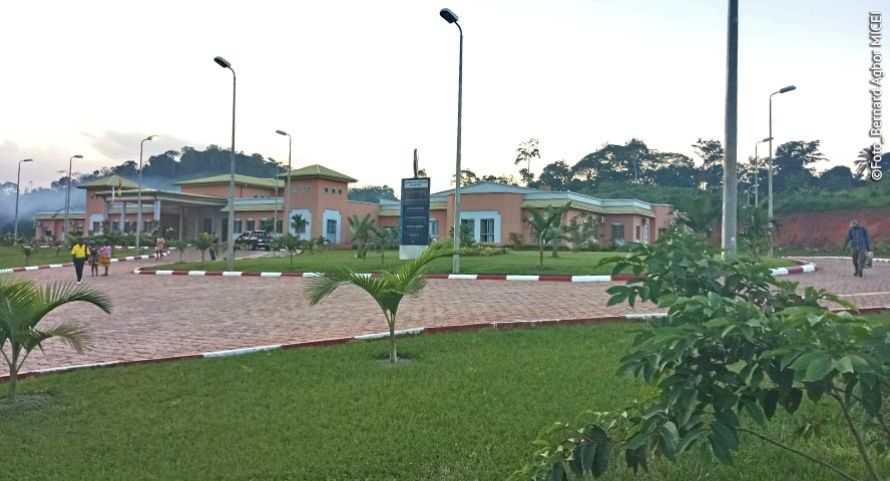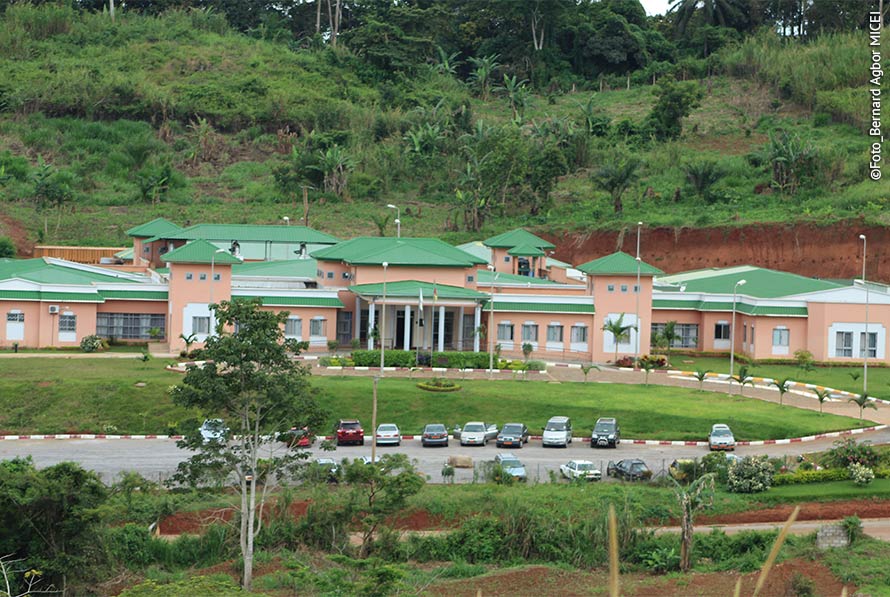Eye Clinic Counts on Reliable Solar Power

The challenge
The Magrabi ICO Cameroon Eye Institute (MICEI) in Cameroon is the first non-profit institute for ophthalmology in sub-Saharan Africa. The institute is located 20 kilometres north of Cameroon’s capital Yaoundé. Since its launch in 2017, the institute has reportedly performed over 100,000 treatments and over 5,000 eye operations. For these treatments, the institute needs a reliable energy supply. To date, the institute has been drawing its electricity from the national grid. However, this grid regularly breaks down, which is why the institute also operates an emergency generator. The electricity costs are high and exceeded 72,000 euros for the period of August 2016 to September 2018. The generator also produces climate-damaging CO2.
The objective
Therefore, MICEI wants to reorganize its power supply and generate a large part of the electricity itself. For this purpose, the institute wants to install a photovoltaic system consisting of various PV modules. The total cost of the project is of approximately 265,000 euros. If one compares these investments with the previous electricity costs, the PV system offers several advantages. In the long term, the institute can reduce its energy costs and at the same time increase energy security. MICEI expects to be able to treat 40% more patients and to perform 30% more operations.
Our partners
The MICEI is a specialized ophthalmological facility that started operations in March 2017 under the umbrella of the Africa Eye Foundation. The institute operates a modern ophthalmology centre, as well as a training centre, a research and telemedicine centre and a mobile unit that treats patients in rural areas. It treats 20 percent of its patients free of charge on its premises. They come not only from Cameroon, but – MICEI enjoys a good reputation – also from numerous neighbouring countries.
The approach
The MICEI Solar Energy for Eye Care project will be implemented in several steps. First, the environmental impact will be assessed, followed by the design of the required photovoltaic system and the set-up of a project team. The employees responsible for operation and maintenance will be trained accordingly. As per the plan, the photovoltaic system is to consist of three autonomous modules that will provide the electricity for interior lighting, street lighting and the electricity for the operation of the institute. As a back-up – for example in times of monsoon – MICEI intends to make use of the national power grid.

Center Region
Solar energy
Patients
07/2020 – 12/2021



